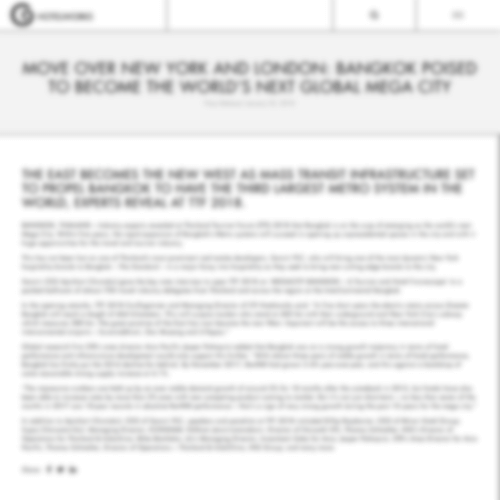Hua Hin’s Tourism Footprint Remains Entrenched In Domestic Demand
- Press Releases
- |
BANGKOK, THAILAND – Thailand’s legacy seaside leisure destination Hua Hin is continuing to be defined by the domestic sector. Last year 72% of travelers who stayed in hotels were Thais according to a new report released by hospitality consulting group C9 Hotelworks. This annualized trading pattern was up 1% in year-on-year terms with strong weekend and public holiday traffic as the main contributing factor.
Performance by Hua Hin hotels as tracked by STR Global was remarkably strong in 2014 despite Bangkok’s political crisis as market-wide occupancy tallied in at 68%. Buoyed by a rising tide of investment into the tourism industry, room night demand over a five -year period has grown from a base of 57% and pushed upwards with a 3% compounded annual growth rate.
“A resoundingly strong domestic market has spurred average room rate growth upward to USD130 which is a trend most evident at upscale beachfront hotels” commented C9’s Managing Director Bill Barnett. Adding “the Thailand-based Proud Group who developed the InterContinental resort, Vana Nava water park and are co-investing in the new Bluport mall along with a Holiday Inn managed property are lead indicators of positive long term sentiment.”
There is little surprise that Mainland China was the leading growth segment in 2014 with a surge of 16% in volume. Despite the shift, Europe with its seasonal snowbird influx commanded 19% of the tourism market. Germany, Denmark and the U.K. have registered double-digit compounded growth between 2010 though 2014.
On the accommodation front Thai group TCC are investing a 328-key hotel which will be managed by the Marriott chain, and is slated to open in the first quarter of 2016. C9’s Hua Hin Hotel Market Update states there are 9, 157 rooms in registered tourism establishment, which compares to just over 46,803 in Phuket and nearly 17,986 for Koh Samui.
One of the key trends noted in the report is the increasing urbanization of the corridor between nearby Cha Am and Hua Hin. Vast land holdings by significant Thai conglomerates in the former is expected to be developed into a series of mega-projects in the decade ahead as the Bangkok metropolis evolves outwards.
Despite current favorable hotel trading, Bill Barnett points out “while widespread investment is taking place in demand generators such as hotels, tourism attractions, residential real estate and upscale retail the bottleneck in transportation infrastructure poses the most serious roadblock in elevating the destination alongside it’s domestic and regional competitors.”
Other Press Release

As Phuket tourism market recovers, a potential “carmageddon” infrastructure crisis looms
Category: Press Releases, Posted:31 Oct 2023 | 11:21 am New research shows that the island’s hotel market has returned to pre-pandemic levels